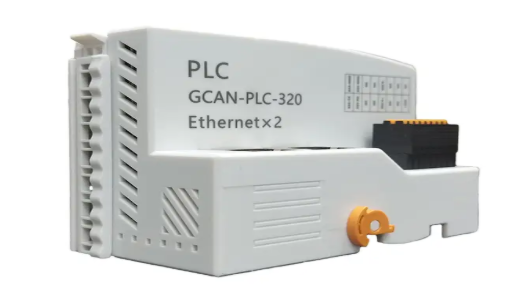PLC (Programmable Logic Controller) serves as a core device in the field of manufacturing automation, widely applied in manufacturing, process control, as well as in construction and infrastructure. Its flexibility, programmability, and efficiency make PLC one of the key technologies for achieving automation and intelligence.
PLC Applications in Manufacturing: Production Line Control, Assembly Process, Packaging and Logistics
- Production Lines are a vital component of industrial production, and their efficient operation is crucial for the production and delivery of products. In the past, production line control often relied on traditional hardwired control systems, which had drawbacks such as fixed functionality and cumbersome maintenance. However, with the advent and development of PLCs, production line control has undergone revolutionary changes.
The application of PLC in production lines allows for precise control of production cycles. Through programming, PLCs can accurately control the start and stop times of various devices based on the processes and task requirements on the production line, ensuring coordinated operation and efficient production. This maximizes the production capacity of the line while allowing for flexible adjustments based on changes in market demand, enhancing the adaptability and flexibility of the production line.
Furthermore, PLCs can also facilitate product sorting and classification. Sometimes, products need to be sorted and classified according to specific requirements on the production line. Through PLC control, products can be accurately sorted to the appropriate locations based on their characteristics and destinations, achieving efficient classification and distribution.
The application of PLC in production lines brings significant convenience and efficiency improvements to industrial production. Its characteristics of flexibility, programmability, and high automation make production line control more intelligent and precise. With continuous technological advancements, the application of PLCs will continue to expand and deepen, bringing more innovation and breakthroughs to production line control and industrial automation.
- Assembly Lines are crucial in manufacturing for assembling components into finished products. The efficient operation of assembly lines is essential for product quality and production efficiency. The application of PLC in assembly lines greatly enhances the level of automation and intelligence in the assembly process.
PLCs can enable automatic detection of components. During the assembly process, the quality and integrity of components directly affect the final product’s quality. By programming the PLC and connecting various sensors, it is possible to detect components for attributes such as size, shape, and color. If defective or non-compliant components are detected, the PLC automatically halts the assembly process to prevent the production of faulty products and notifies staff for corrective actions.
PLCs play an important role in automated assembly. The automation processes on assembly lines can significantly increase production efficiency and consistency. Under PLC control, robotic arms, conveyor belts, and various assembly equipment can automatically complete tasks such as picking, positioning, and connecting components, achieving fast and accurate automated assembly. This not only improves production efficiency but also reduces errors and instability associated with manual operations, ensuring consistent and reliable assembly quality.
Additionally, PLCs can implement various logical controls during the assembly process. For example, based on product models and customer requirements, PLCs can select different assembly processes and parameters according to pre-set programs and conditions, enabling personalized assembly for different products. This grants the assembly line greater flexibility and adaptability, capable of meeting diverse product demands.
Thus, the application of PLC in assembly lines makes the assembly process more intelligent, efficient, and flexible. It plays a vital role in component detection, automated assembly, and logical control, providing robust technical support and solutions for manufacturing. As technology continues to develop, PLC applications in assembly lines will continue to advance, bringing more innovation and progress to the automation and intelligence upgrade in manufacturing.
- In Modern Manufacturing, packaging and logistics play a crucial role, directly impacting product delivery and sales. The application of PLC in packaging processes and logistics management provides efficient and accurate automated control and intelligent solutions for production and logistics.
PLC applications in the packaging process are primarily reflected in automatic packaging machines. Through PLC programming, automatic packaging machines can automatically adjust packaging speed, dimensions, and formats based on product characteristics and packaging requirements, achieving fast and efficient packaging operations. Under PLC control, automatic packaging machines can accurately package products into boxes, bags, or containers, completing sealing, labeling, and other processes to ensure consistency and aesthetic quality of the packaging. Furthermore, PLCs can monitor the operational status and faults in real-time during the packaging process. Upon detecting anomalies, they can promptly stop operations or trigger alarms to ensure production safety and product quality.
The application of PLC in logistics management is mainly reflected in conveyor control. In modern logistics systems, conveyors are essential tools connecting different production phases. Under PLC control, conveyors can facilitate automated transportation, moving products from one production stage to another, enabling seamless integration and efficient operation of production lines. PLCs can adjust the speed, direction, and stopping of conveyors based on different production tasks and logistics needs, facilitating flexible logistics scheduling and resource optimization. This significantly improves transportation efficiency, reduces labor costs, and minimizes potential errors and losses in logistics processes.
In addition to automatic packaging machines and conveyor control, PLCs can also realize functions such as automated warehousing, sorting, and loading in logistics management. By integrating smart sensing technologies and IoT, PLCs can achieve automatic identification and localization of warehouse goods, enabling rapid sorting and loading, thus enhancing the processing efficiency and accuracy of logistics.
The application of PLC in packaging processes and logistics management makes these areas more efficient, intelligent, and flexible. It plays an important role in automatic packaging machines, conveyor control, and more, bringing higher levels of automation and intelligent upgrades to modern manufacturing and logistics. As technology continues to develop, the application of PLCs in packaging and logistics will continue to deepen and expand, fostering more innovations and developments for efficient operations across the industry chain and enhancing customer experiences.

































